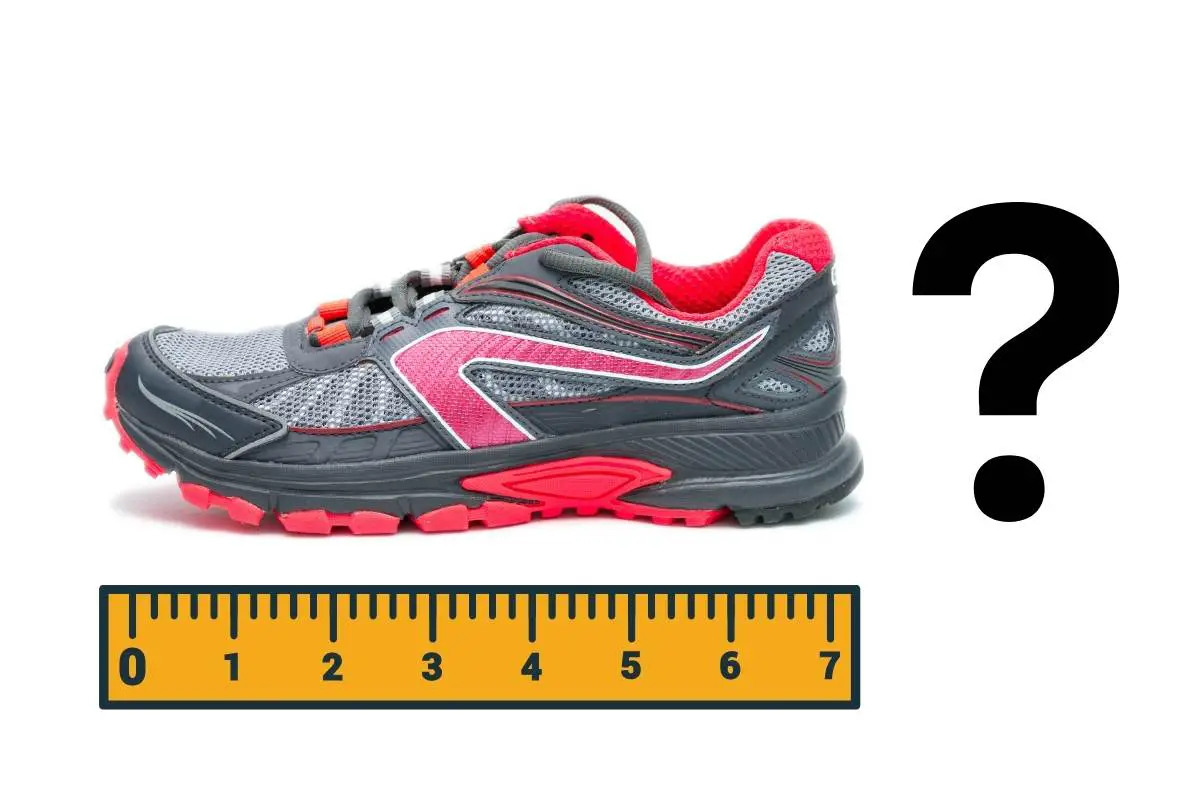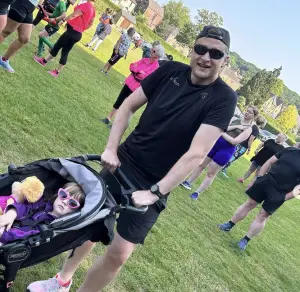If you’re looking to buy running shoes, you probably have many questions about how to find the right pair. Not only do you have to consider the shoe’s cushion, but also what size you should get. After years of running in my walking shoe size, I now go bigger…
Running shoes should be bigger than your casual or dress shoes. However, they may not be a whole size bigger because different shoes have different sizing variations. The size of your running shoe depends on the measurements of your foot.
Finding a running shoe that fits involves much more than picking a size larger than you normally wear. It involves accurately measuring your feet and checking the shoes in various ways to ensure they fit. You should also consider if your running shoes should be tight or loose; here’s an article I wrote to help with that.
To help with this, we have put together various tips and tricks to help make sure you get the perfect fit.
Measuring Your Feet Correctly
The only way to ensure you get the right shoe size is to have your feet measured. As a rule of thumb, you should get your feet remeasured every year.
The size of your feet will change over time due to things like:
- Aging
- Injuries
- Pregnancy
The best place to measure your foot is at a shoe store with a trained employee. (see this post for why running shoes should be a size bigger). Trying to measure your feet at home and ordering online can result in an improper fit.
How to Measure Your Feet
The salesperson measuring your feet should have you stand up while they do it. They should also measure both of your feet, not just one.
Some people can have a full-size difference between their right and left feet.
If one foot is bigger than the other, buy a pair of shoes that fits the bigger foot.
To make the smaller foot fit the shoe better, you can:
- Add an extra sock
- Change the lacing
You can even buy two pairs of shoes in different sizes so that you will have one to match each foot.
Do Not Ignore Arch Length
If your salesperson doesn’t measure your arch, ask them to take the measurement for you.
Your arch length is important because it is where your foot flexes. All shoes have an area where they flex. Lining up your flex point with the shoe’s flex point will result in a more comfortable fit.
Trying Your Running Shoes On
After you have measured your feet, it is time to pick a pair of shoes and try them on. Here are a few tips to help make sure your shoe is the right fit.
Take Out the Inserts
Before you even put the shoe on, take the inserts out and stand on them. You want to make sure that no part of your foot spills over the edges of them. By doing this, you are ensuring the size and shape of the shoe match your feet correctly.
Tie Your Shoes Correctly
Once you have put the inserts back in and put the shoes on, you want to make sure you lace them correctly. You should be able to tie them so that you can still fit one finger between your shoe and the knot. Tying your shoes too tight or too loose can result in an improper feel for how they are fitting.
Pay Attention to Shoe Volume
The amount of space inside your shoe while your foot is in it is important. Shoes that are too tight or too loose can be uncomfortable and bad for your feet.
You can tell if your shoe is the right size by putting your fingers between the eyelets while they’re tied.
How to Tell You Have the Right Shoe Volume
| Number of Fingers Between Eyelets | Amount of Volume |
| One | Too much – Loose fit |
| Two | Just right – Perfect fit |
| Three | Not enough – Too tight |
Measuring for your foot’s optimal volume inside a shoe can help you know if you need wide or narrow shoes. You want to ensure the volume is right; otherwise, you will experience foot injuries such as plantar fasciitis. Here’s my article on if running shoes are too big.
Ensure You Have the Right Length
There should be about a thumbnail’s width worth of space between the front of the shoe and your longest toe. If there is less, you need a bigger size. If there is more, consider going down a size.
Test the Shoes
Take a run around the store if you can, or a short walk, to feel them out. Don’t get them if:
- Anything pinches
- Your ankle rubs uncomfortably
- Your heel slips
If you experience any of these problems while trying them on, you will likely need a different size.
Tips to Finding the Perfect Fit
Finding the best fitting shoe can take some time. Making sure you get the size that is going to fit you best is important, though. That’s why we have put together a few tips and tricks to ensure this happens for you.
Don’t Buy Online
Even if you have already had your foot measured this year, you should avoid buying online. Different shoe types vary in sizes and fits. You should always try your shoes on before committing to buying them.
Also, sales associates will have a deeper knowledge of what shoes run more narrow or larger than others. They can also help to ensure you get the perfect fit.
Wear the Same Socks
You should wear the same socks you plan on running in when you go to buy new shoes.
Socks vary in thickness, which means you could end up requiring a full shoe size larger for thicker socks. Therefore, it is imperative you wear the same type of socks you plan on running in when you go to try on new shoes.
Buy Shoes Later in The Day
Our feet swell throughout the day. They also swell as we run due to increased blood flow. Therefore, it makes sense to get your feet measured for running shoes when they are more swollen.
If you are someone who runs in the morning, you can get new shoes earlier because your feet will be swollen from the run.
Don’t Assume You Will Break Your Shoes In
You should never purchase a pair of shoes that doesn’t feel comfortable from the start. The shoe isn’t going to expand if it is too small for your feet.
Yes, the cushioning may break in over time, but the size is not going to change. See my post here on do running shoes stretch.
Shoes that are too small for you can result in:
- Blisters
- Bunions
- Deformed toes
- Inflammation
- Numbness in your toes or feet
Always buy shoes that fit your feet.
Don’t Give In To Peer Pressure
Oftentimes shoe buyers will find the perfect fit but be dissuaded from a shoe because their friend does not like it.
Instead, their friend will find them a shoe that may be a nice color but doesn’t fit properly. As a result, the shoe buyer will go home with a shoe that doesn’t fit all because their friend said they liked it better.
Don’t do this. If you have to leave your friend at home in order not to give in, do it. The fit of your shoe is much more important than the coloring of it.
Running Shoes Are Sized Bigger Than Casual Shoes
Your running shoes will likely be bigger than your casual shoes since your feet are more likely to swell while you are running. However, exactly how much bigger depends upon your feet and the sizing variations of the brand you choose.
Never just pick a size bigger than your casual shoes and take them home. It is imperative that you correctly measure your feet and try the shoes on before purchasing them. This is the only way to ensure your shoes will fit you correctly.
https://www.runnersworld.com/training/a28172274/running-shoe-size/
https://www.runnersworld.com/gear/a20856639/8-mistakes-runners-make-when-buying-running-shoes/ – mistakes to avoid
https://www.healthline.com/health/shoes-too-tight#foot-issues – foot problems

